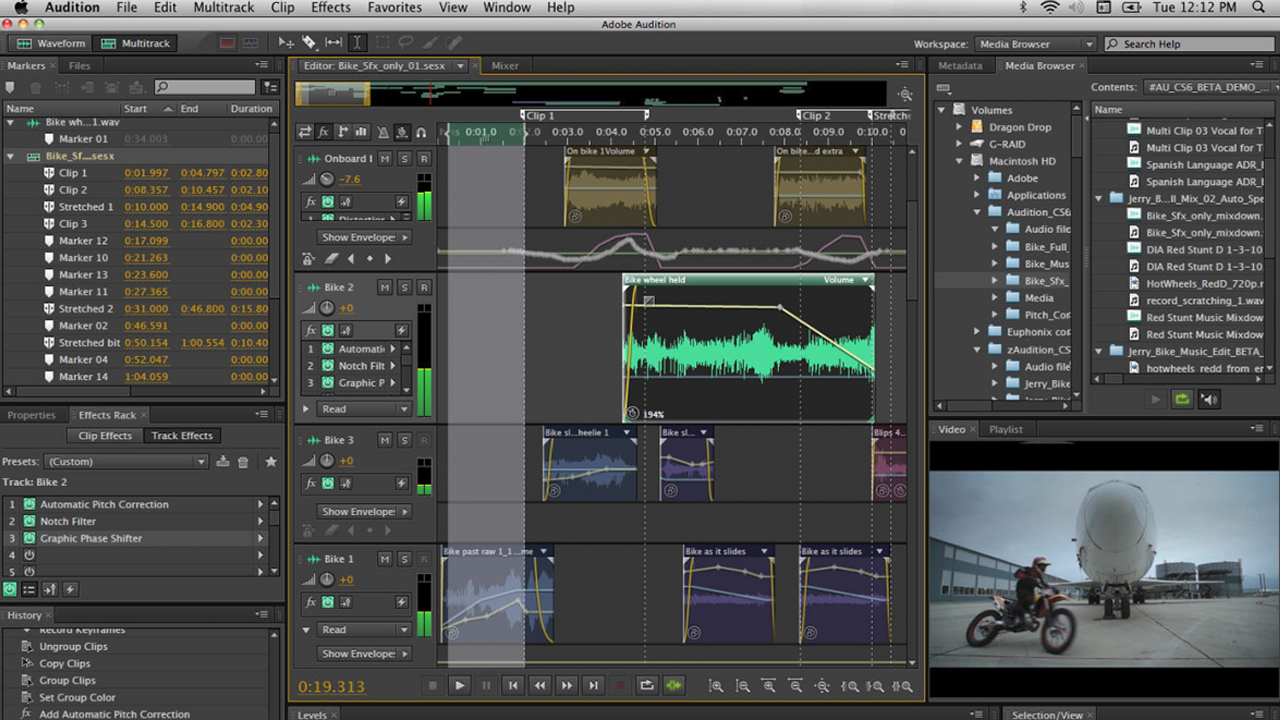The Farmer is the Man Who Feeds Audio File
Audio file types: what are they, and what is the difference?

If you're looking to use, copy, or edit audio files you should be aware of the various types, and the differences between them. While most of the best audio editing software (opens in new tab) packages will allow you to work with most common file types, it's important to be aware of which ones perform best under specific circumstances. Some are superior for listening and copying, whereas others play nicely with video and are easier to work with in terms of mixing and editing.
If your chosen audio file type is in the wrong format for your needs, you can always get hold of one of the best audio converter software (opens in new tab) programs and adjust it. Some are free, and most are easy to use, so it doesn't take much to get your sound files exactly as you need them. Below are the most common audio file types, what each one means, and what the main differences are between them. If you're in any doubt about what type of file you're working with, the extension will tell you, and we've included all common extension names with each entry.
The best home computers (opens in new tab) will happily recognize all the following file types, and most will play on all modern smartphones and tablets.
Waveform Audio (.wav)
Waveform Audio (.wav) is a common file format. Created by Microsoft and IBM, WAV was one of the first audio file types developed for the PC. WAV files are defined as lossless, meaning that files are large and complete; nothing has been lost. Professionally recorded CDs are also a lossless audio source. In contrast, the three audio formats listed below are lossy-redundant and non-auditory data is removed to allow for more compact storage; in essence, some data has been lost. This process of removing data to shrink the file size is called compression. The three file formats below must begin with a lossless format (such as a computer WAV file) then compress it. Most lossy formats boast little or no detectable change in sound quality. But because each compressing format selects the deleteable data differently, converting one compressed file into another lossy format will sometimes result in lower quality audio. Again, always start with a WAV file, then compress.

MPEG-1 or 2 Audio Layer 3 (.mp3)
MPEG-1 or 2 Audio Layer 3 (.mp3) is a common, compressed WAV file. MPEG-1 files are about one-twelfth the size of WAV files. This is why MP3 players can accommodate hundreds of songs on a tiny chunk of storage space.
Windows Media Audio (.wma) was developed to compete with the MP3 format for Windows Media Player. Microsoft claims that the WMA files are compressed three times more than MP3s yet retain their original sound quality.
Advanced Audio Coding (.aac)
This is the audio file format used by Apple for iTunes and Music, and it's designed to be superior to regular mp3s. AAC compresses better than mp3, losing less audio quality than its older cousin. The main drawback is that AAC files take a little longer to encode than mp3, so batch audio conversion takes a longer.
Ogg Vorbis (.ogg)
Ogg Vorbis (.ogg) is another compressed source code similar to MP3, but like WMA, more compressed. Ogg Vorbis is also open source (free to all, unlicensed, no strings attached). While MP3 compresses data at a constant bit rate, Ogg uses a variable bit rate. To illustrate-if you are copying chunks of silence into MP3 format, the compression bit rate stays the same as if you were compressing the sound of an entire orchestra. But if you are copying chunks of silence into Ogg, your compression rate will drop to nothing. The rate varies with the need.

Other audio file types
- Musical Instrument Digital Interface (.midi) Musical Instrument Digital Interface (.midi) is commonly used for computer keyboards and other computer-based musical tools. MIDI files contain musical notes, rhythm notation and other information often needed by a composer.
- Audio Interchange File (.aif, .aifc or .aiff.) Audio Interchange File (.aif, .aifc or .aiff.) was developed for the Mac computer to store audio files.
- Sun Audio (.au) Sun Audio (.au) or Audio/Basic was developed by Sun Microsystems for use on UNIX systems.
- Emblaze Audio (.ea) Emblaze Audio (.ea) was created by Geo and offers compression similar to MP3 formats, but its purpose is to be played with a JAVA applet-a miniature Internet program. Online greeting cards often use JAVA applet programs for motion and .ea sound files to play music.
- For more audio content, check our guide to the best audiobook services (opens in new tab)
- For more editing content, here's our guide to the best video editing software (opens in new tab)
baddeleysount1936.blogspot.com
Source: https://www.toptenreviews.com/audio-file-types
0 Response to "The Farmer is the Man Who Feeds Audio File"
Post a Comment